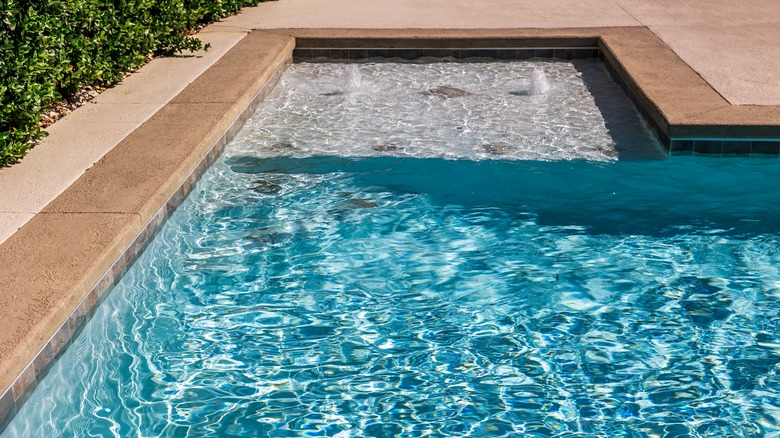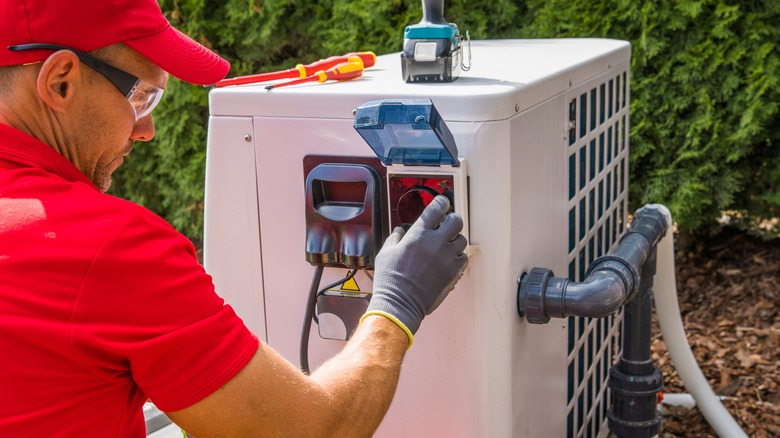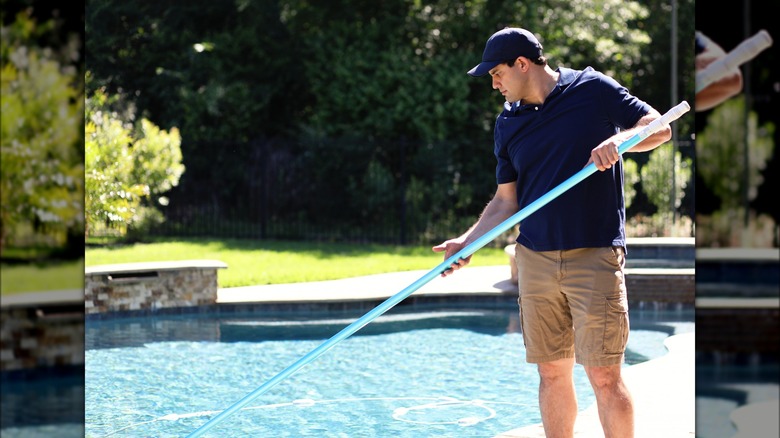Is It Hard To Convert Your Chlorine Pool To Salt Water?
Having a pool is a luxury, but for many of us, the chlorine in inground pools can irritate our skin or be dangerous for people with breathing concerns like asthma. As we venture into a more natural-focused world, a lot of pool owners are opting to convert their chlorine pool into a saltwater pool. Not only are saltwater pools gentler on our skin and safer for our health, but they are also cheaper to maintain and don't come along with that chlorine smell so many of us hate. And the best part — converting your chlorine pool into a saltwater pool is actually quite simple.
If you envision yourself having to drain your pool water and start fresh, you'll be delighted to know that draining is not required. In fact, the conversion only requires four steps, with only one of those steps being labor-intensive. Moreover, with the help of a professional, the conversion can be done quite quickly.
How to convert to a saltwater pool
When you're ready to make the switch from chlorine to saltwater, the steps are fairly easy. However, it does involve installing a new chlorine generator, which can be tricky for those who have never done one before, so you may want to enlist a professional for help. A new saltwater generator can cost up to around $2,500 and every 3 to 7 years, you'll need to replace the control board, which can cost around $1,200 to $2,000.
If you do choose to do the conversion yourself, you'll first have to balance the chemistry of your current pool water. Once you can ensure that your pool is chemically neutral, you can install the saltwater chlorine generator. It's important to note that a saltwater pool still uses chlorine, just a highly diluted version that requires a significantly less amount of chemicals. Once the generator is installed, it's time to add the pool salt. You can purchase pool salt for about $8 for a 40-pound bag from Home Depot, so the cost of pool salt depends on how big your pool is. Once the generator is installed and the salt is added, you simply need to test your water one more time to ensure everything was done correctly.
How to care for your saltwater pool
The initial conversion is simple, but your work is far from over. Saltwater pools need maintenance the same way chlorine pools do. You'll need to ensure that the pH levels are correct at least once a week (this is why many people hire a pool company to care for their pools) and clean the filters and skimmers each week as well. If your levels are off and your pool looks cloudy, you may actually need to add chlorine to your pool, which is a science in itself.
If you have made the decision to switch over to saltwater, you can rest easy knowing you made a good decision. Of course, there are downsides to saltwater pools, including salt's corrosive effect, which can damage your pool after a long period, and the fact that you may need to replace your pool person with someone who specializes in salt. But overall, having a safer, more cost-effective pool will benefit you and your family in the long run.


